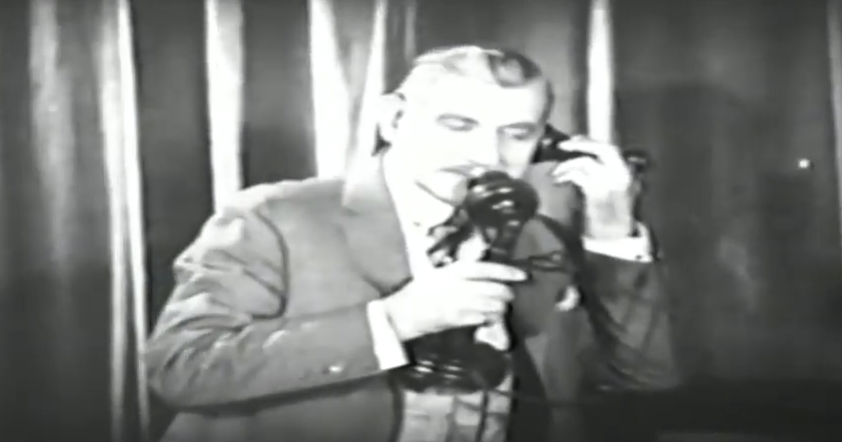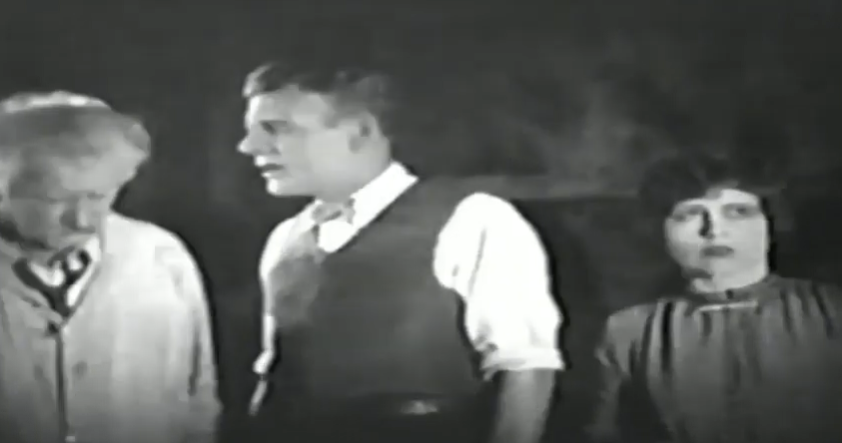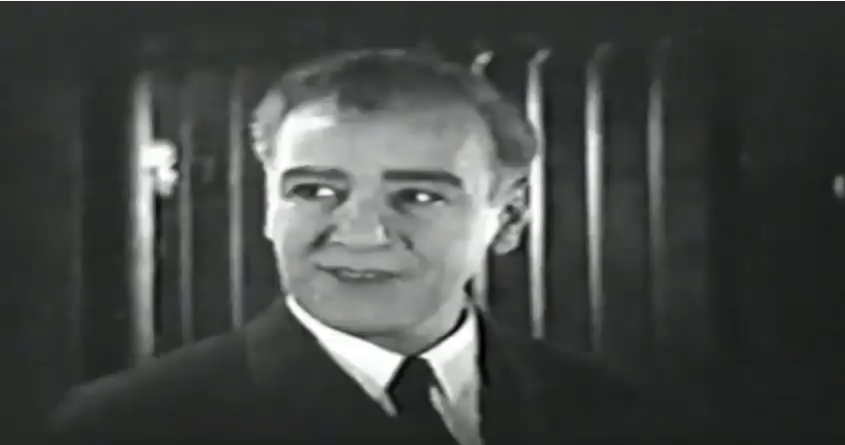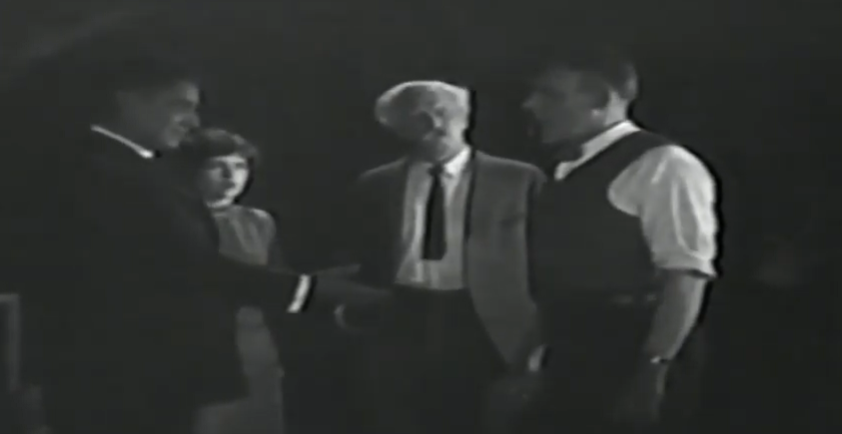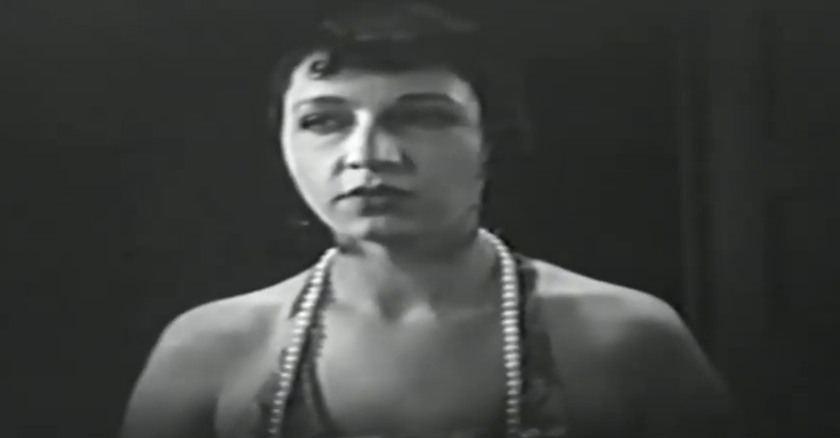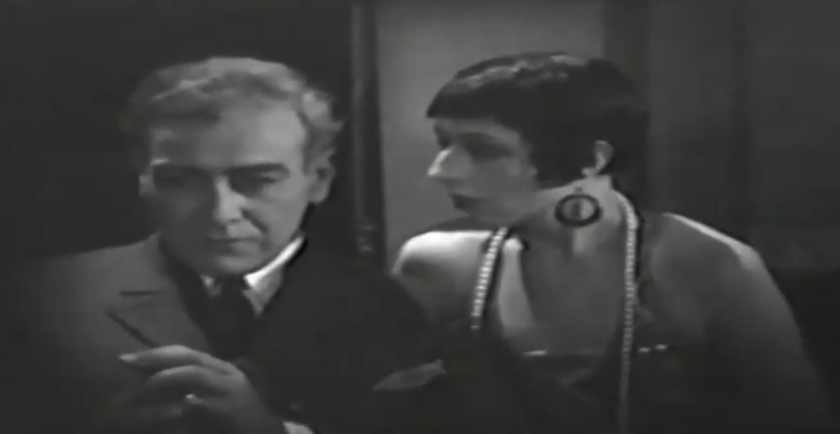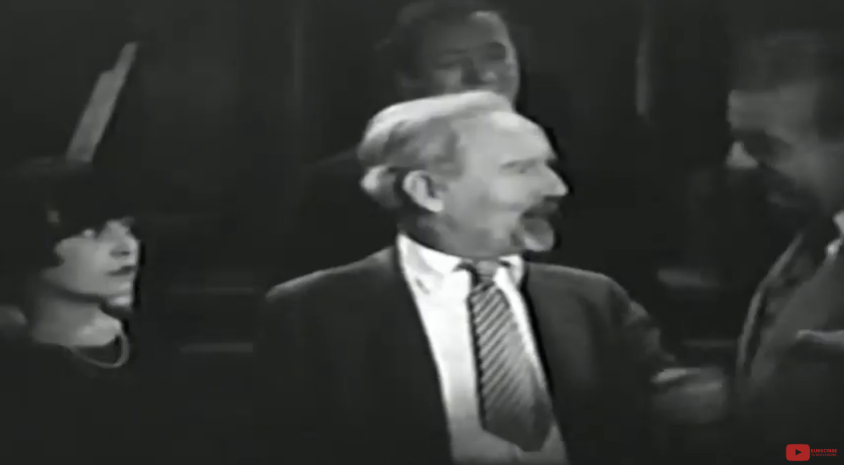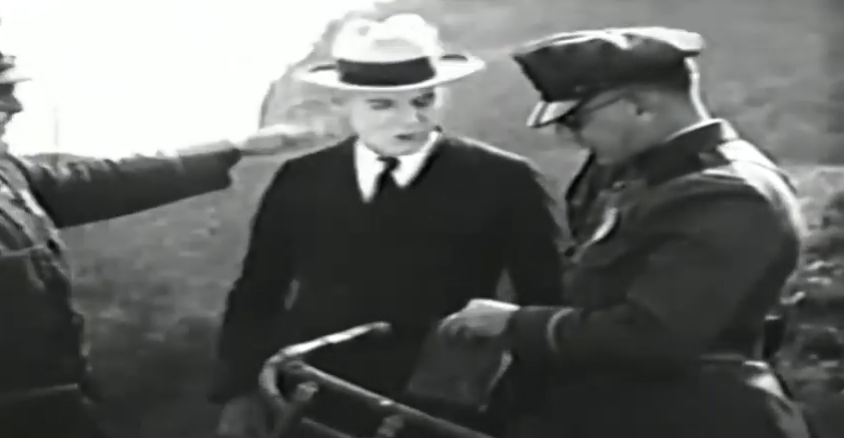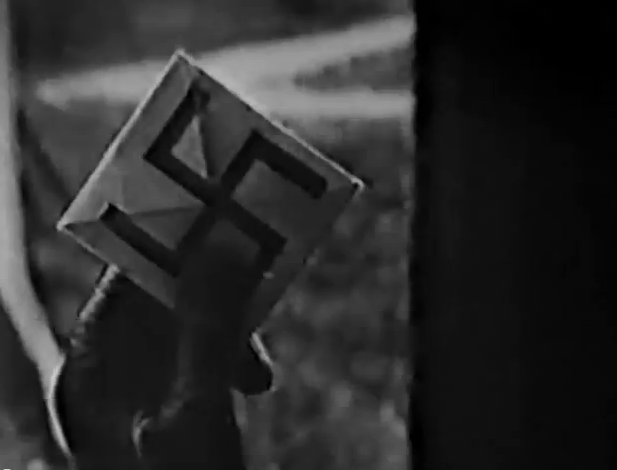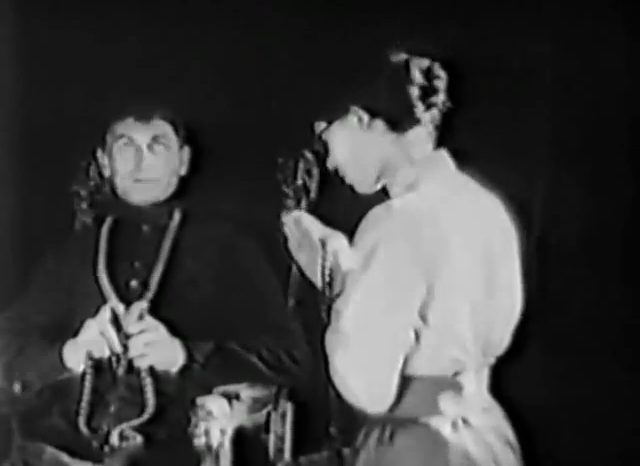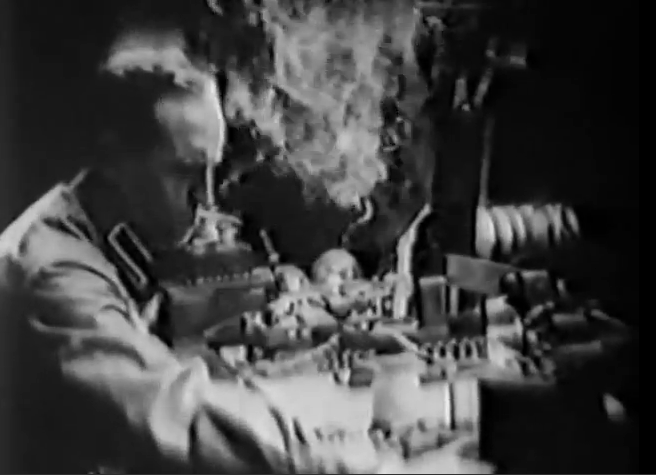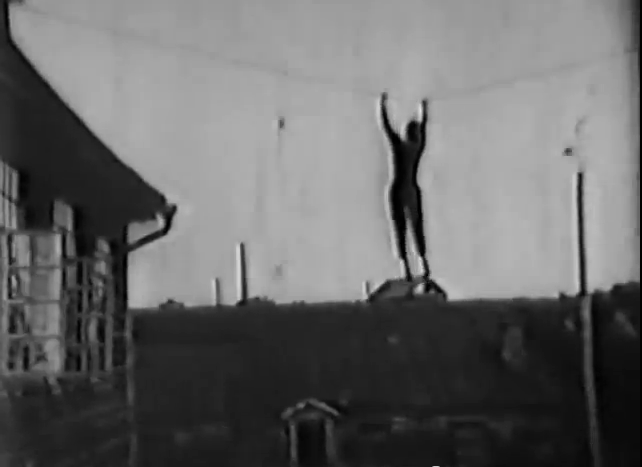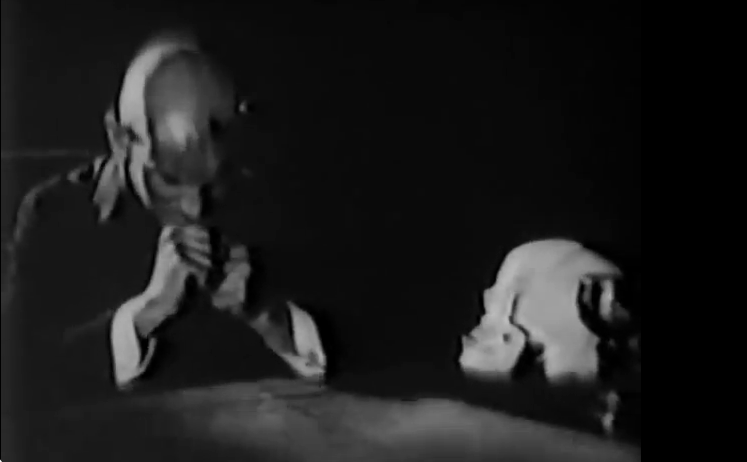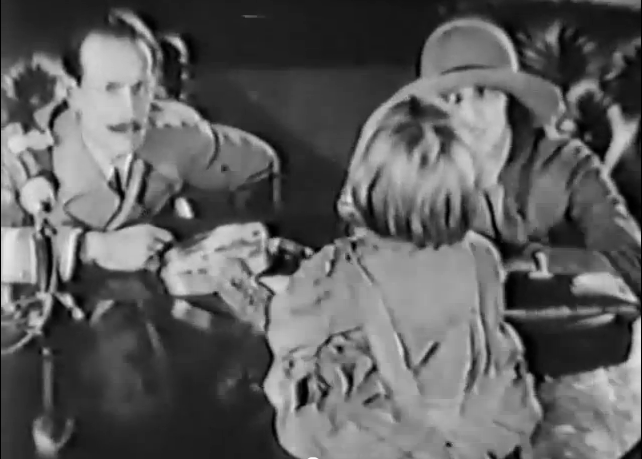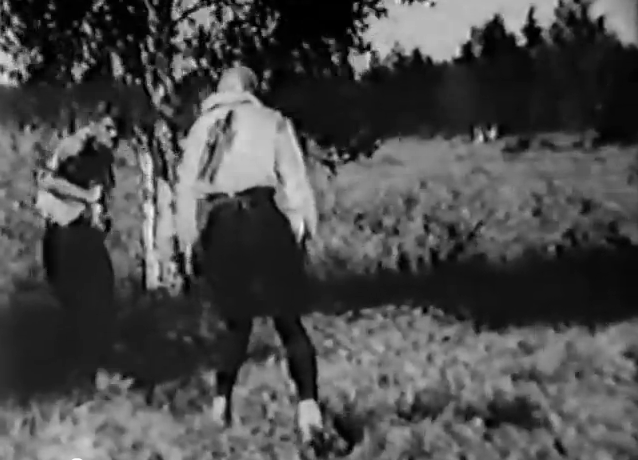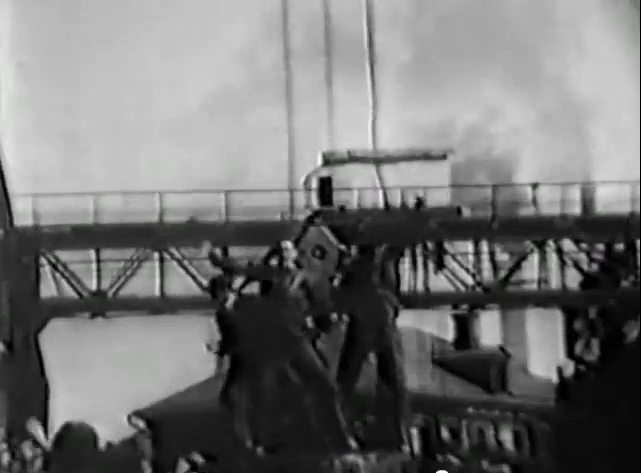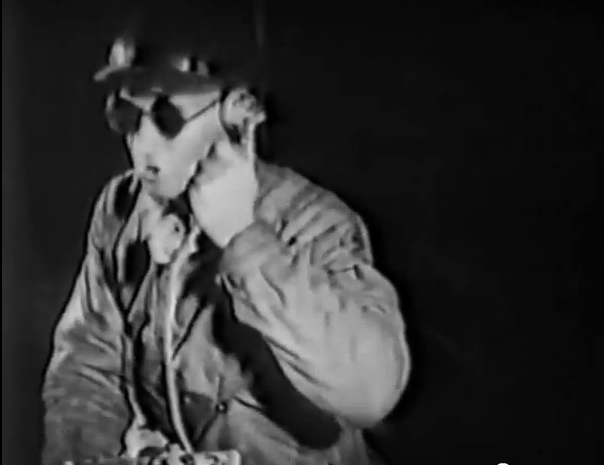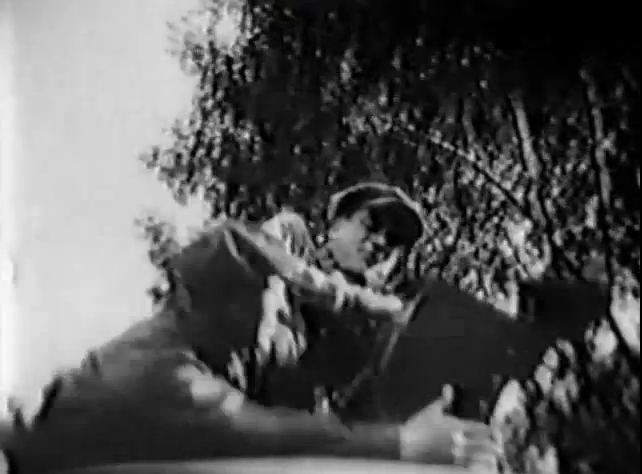-
#404 – The Power God (1925)
The Power God (1925)
Film review #404
Directors: Francis Ford, Ben F. Wilson
SYNOPSIS: Professor Sturgess, with his assistant Jim Thorpe, has invented a machine that can draw infinite power from the air, which will be sure to revolutionise the way energy is produced. However, this invention has drawn the attention of the coal and oil companies, who have agreed that the invention is a threat to their monopolies, and must be destroyed. They hire career criminal Weston Dore to deal with Sturgess, but Dore has other plans to steal the invention for himself and become the new “power God”…
THOUGHTS/ANALYSIS: The Power God is a 1925 movie serial comprised of fifteen chapters, and one of the few serials that has sadly survived from that time. The story opens up with Professor Sturgess and his assistant Jim Thorpe finishing development on a machine described as “the marvel of the radio-electric age,” which can draw power directly from the air, providing a nearly infinite source of energy. This machine has drawn unwanted attention from the traditional energy businesses, who fear the collapse of their industry, hire criminal Weston Dore to get a hold of the machine by any means necessary. When Dore tries to buy the machine from Sturgess with the aim of suppressing it, Sturgess refuses. Dore then has to change plan and has Sturgess killed. With enemies closing in, Thorpe and Strugess’ daughter Aileen have to hide the machine and protect the invention from falling into Dore’s hands, who decides to try and keep the invention for himself to become the new “power God” of the modern world. The story has a familiar setup as with most serials, but this is one of the serials that defined the format for twenty years, and provided a ready-made template for companies like Republic and Universal to pump out similar serials in around a month or so.
At the time it was released, The Power God would have been something many people had not seen before, particularly in the science-fiction genre. Compared to those other serials, The Power God is a strong example of the potential of the format’s storytelling potential. Following Jim asking Professor Sturgess’ approval to marry Aileen and being refused, the two decide to elope and marry in secret. However, a car accident involving her and Dore in another car leads to her losing her memory, and when their rescuers believe Dore to be Aileen’s wife due to the wedding ring they found (which was for Jim), Dore capitalises on this for his schemes and tries to convince Aileen she is his wife while her memory is gone. This is quite a complex situation, and takes up the first few episodes as Jim tries to rescue Aileen and stop her from signing over her Father’s estate to Dore, as well as trying to get her to recover her memory. There’s definitely plenty going on in this story, and each chapter feels a bit different and pushes the story forward, instead of other serials where each chapter is just the foiling of another scheme, a fist fight, and a cliffhanger. The Power God goes through a number of plans and schemes, fleshing them out in depth, and advancing the story in a structured way, as well as introducing new characters that add something new along the way.
The characters themselves are the typical cast of serials: you have the broad-shouldered white male for the lead who does most of the action, a female secondary character who gets captured a lot, a scientist, a criminal villain…they’re all here in some capacity. However, the characters are given plenty of development to make them feel unique. Dore is intent on getting the machine for himself, and his interactions with his calculating wife Carrie give him a bit more of a human dimension. We are also introduced to Carrie’s brother later on, who again changes up the dynamic and keeps things interesting. A mysterious man who aids Thorpe and Aileen from time to time without explaining his motives adds an element of intrigue as to what his role is. He is often just called “the Hindu,” which I’m sure would have been appropriate for the time. He at least is not played by a white actor in ‘blackface,’ but his actor, a native American, does seem to have a bit of makeup on to darken his skin. There are also two black men who are characterised as ‘simple minded,’ which is sadly how every black person on film was depicted in this time. These are certainly problematic, and a product of their time.
The serial is well produced and shot, with plenty of consideration into camera angles and scene-setting. Some of the action scenes, such as on the train near the end, would no doubt taken some effort to pull off. The fight scenes are less well done, and they mostly feel like a chaotic scrap. I don’t think choreography for fight scenes had really been established or developed at the time. The most peculiar aspect of the film for me is the ending: after Dore is stopped and the machine recovered, Aileen and Thorpe realise this machine that will revolutionise how energy is produced will have the consequence of putting thousands of people out of work. In realisation of this, they simply decide to destroy the machine to preserve the status quo. This is a bit of an anti-climax since the viewer will have watched this serial for five hours to see them recover the device, only for it to be willingly destroyed. Also it seems to have the message that invention, science and progress should only be allowed as long as they don’t upset the status quo, or put people in poor working conditions out of a job. The messaging that progress and change is bad does not feel natural, it feels forced and tacked onto the end. It is highly reminiscent of early Soviet cinema where such an ending would be stuck on the end to fit certain propaganda and messaging: the hero would realise his foolishness at independent thought, and would heroically take his place in the system. The example that comes to mind is the Russian film Gold in particular. I wonder if this ending was intentionally made to not upset big business, or they could not figure out any other ending. Either way, it’s not a satisfying payoff, and is rather suspect. Overall though, The Power God is a good serial that has plenty of content, as well as twists and turns that keep things fresh and interesting. The characters are well defined and undergo enough development throughout. There’s some problems around its racial characterisations and the questionable ending, but it certainly provides a template for the format as it was used in the years after it until its demise.
-
#14 – The Death Ray (1925)
The Death Ray (1925)
Film review #14
Director: Lev Kuleshov
A Soviet sci-fi spy thriller from the 20’s packed with action…
In an unnamed “fascist” country, Tomas Lann is imprisoned at a “helium factory”, but manages to escape during a revolt. He flees to the home of Professor Podobed, where he wishes to get the “death ray” he has been working on to fight the fascists. However, one of the fascists, Father Revo, breaks into the Professor’s home and steals the death ray. Lann then chases down another one of the fascists named Fog in order to get the death ray back.
First, I should note that there is no English translation for this film, so my understanding of the movie is a bit limited, and as you can see from the stills above, the only surviving copy of the film is a bit poor in quality. Nevertheless, ever since I heard about this movie, I’ve wanted to watch it. Apparently, there are portions of the movie missing as well, which makes it even harder to understand the narrative.
This movie offers a different take on filmmaking in the 1920s. Before even Metropolis was released, The Death Ray (Luch Smerti in Russian) was released in the USSR, a film by “popular” Soviet filmmaker Lev Kuleshov. Film making in the USSR at this time was tightly regulated by the government, and apparently this film was criticized greatly by them because of a lack of soviet propaganda, and it was too “American” in terms of its production, with a lot of focus on stunts and action.
On that subject, the sheer amount of action in this movie is insane. The actors are jumping from 3-story buildings, hanging from wires suspended on rooftops, crashing through tables and doors, jumping from moving cars, falling down stairs and even running towards oncoming trains and lying down on tracks in front of them, with the train changing tracks at the last second. Now, I’m pretty sure there were no stunt doubles in this movie (or at all back then), so these actors must have been made of strong stuff, and had no sense of fear when filming these sequences. The action takes place in car chases, bike chases, and even a plane sequence, all culminating in a gun/knife fight at the end. Perhaps one of the reasons it is hard to follow the plot is because there is a lot more emphasis on action.
Throughout the film, the so-called “facist nation” is labelled as the antagonist of the film, and although no actual name is given to it, the use of swastikas throughout the movie by them strongly indicates that it is probably Germany or a mid-Europe country. This of course, would serve the USSR regime of painting the Europeans as an enemy of the soviet union rather nicely. Obviously the nazi movement was still in its early stages in 1925, but clearly it was still something the USSR wasn’t very keen on. Looking back on it in the present, we can see this film in the wider context of soviet life, and how they perceived other countries. Another interesting aspect to this is the leader of the fascist nation: Father Revo, is seen as a religious leader. This again puts it in line with the soviet objective of eliminating religion, and portraying the antagonists as religious in this movie tows the USSR’s policy very well.
The film ends with Lann retrieving the death ray and using it on the enemy fighter planes, and finally liberating the prisoners of the factory where he first escaped. Though we never get a close look at the death ray (It is always locked up in a box), the idea of such a weapon being used to bring down the enemies of the USSR was a nice way to end a movie like this which was used as propaganda by the government.
Apparently this movie was also screened in America, though it is difficult to find where and when. I wonder what Americans thought of such a movie, riddled with the Hollywood action sequences and developed on the other side of the world? Either way, the death ray is a rare example of soviet cinema that may lack in plot, but more than makes up for it in terms of action.

